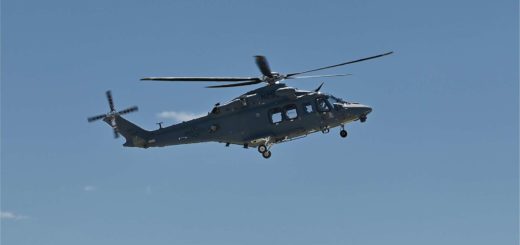Russia Receives New Su-35S Multirole Fighter Jets to Boost Air Superiority Despite Western Sanctions
{loadposition bannertop}
{loadposition sidebarpub}
On June 25, 2025, United Aircraft Corporation (UAC), a key player in Russia’s defense aviation sector under the state conglomerate Rostec, delivered a new batch of Su-35S multirole fighters to the Russian Ministry of Defense, as reported by TASS. These aircraft, part of the 4++ generation, continue to be produced and deployed despite ongoing Western sanctions. With cutting-edge avionics, superior maneuverability, and stand-off strike capability, the Su-35S plays a pivotal role in Russia’s air power strategy in Ukraine. This latest delivery raises critical questions about the sustainability of Russia’s defense industry under economic and technological isolation.Follow Army Recognition on Google News at this link
The delivery of yet another batch of Su-35S fighters confirms that Russia’s military-industrial complex, particularly in aerospace, remains resilient (Picture source: Vitaly Kuzmin)
The Su-35S, known by NATO as the Flanker-E+, is a highly modernized evolution of the Su-27 airframe, incorporating fifth-generation technologies while retaining a 4++ classification. It features a powerful passive phased array radar capable of tracking and engaging multiple targets simultaneously, plasma-ignition engines with thrust vectoring for supermaneuverability, and a redesigned airframe without forward canards or brake flaps. Instead, the aircraft uses differential rudder deflection for braking upon landing. It is equipped to carry a wide range of air-to-air and air-to-ground munitions, and its engines allow for supersonic flight without afterburners, placing it technologically close to stealth-era jets in raw kinematic performance.
Originally conceived in the early 2000s as a deep upgrade of the Su-27, the Su-35S underwent extensive development before entering service in the mid-2010s. Over time, it has become the most advanced operational platform in the Russian Air Force’s tactical fleet, preceding the still-limited Su-57. The aircraft has seen extensive use in Syria and more recently in Ukraine, where it has been tasked with maintaining air superiority, escorting bomber and attack missions, and launching stand-off precision munitions. Serial production remains centralized at the Komsomolsk-on-Amur Aircraft Plant, a UAC subsidiary, where production timelines have been maintained despite sanctions and resource constraints.
What distinguishes the Su-35S from other 4+ generation fighters such as the Eurofighter Typhoon or F-15EX is its combination of high maneuverability, advanced radar coverage, and engine performance without afterburner. Unlike its Western peers, the Su-35S places less emphasis on stealth and more on supermaneuverability and kinetic engagement. Compared to the Chinese J-11D or J-16, which are based on similar airframe heritage, the Su-35S benefits from more refined avionics and propulsion. However, its battlefield survivability has been questioned in the face of advanced SAMs like the Patriot or NASAMS in Ukraine.
The continued delivery of the Su-35S amid active conflict in Ukraine underlines its strategic significance. Militarily, it reinforces Russia’s capacity to control airspace over contested zones and protect bomber corridors used for long-range cruise missile launches. Geostrategically, the Su-35S represents a key export product, previously sold to China and Egypt, although new contracts have slowed due to sanctions on avionics and engine components. Domestically, it helps sustain industrial momentum in Russia’s aviation sector and preserve high-skilled labor in defense manufacturing hubs like Komsomolsk.
The Su-35S program is funded under Russia’s State Armaments Program, which maintains stable procurement for frontline fighter aircraft. Although exact unit costs are classified, estimates place the aircraft at around $40–45 million per unit. The last known export contract was with Egypt, although delivery completion is uncertain. Russia’s domestic orders, meanwhile, remain steady. Rostec confirmed plans to increase production efficiency by 30% by 2030, aiming to exceed previous annual output figures despite the constraints imposed by foreign technology bans.
In Ukraine, the Su-35S has proven critical to Russia’s adaptation to high-intensity air defense environments. It is deployed for air superiority, long-range patrols, precision stand-off missile launches, and escorting Su-34 or Su-25 strike aircraft. The use of long-range air-to-air missiles such as the R-37M allows it to target Ukrainian aircraft from deep within Russian-controlled airspace. However, direct air-to-air engagements are rare, and the platform is used cautiously due to the persistent threat from mobile surface-to-air missile systems operated by Ukraine. Despite these limitations, the Su-35S continues to perform essential missions in Russia’s aerial campaign.
The delivery of yet another batch of Su-35S fighters confirms that Russia’s military-industrial complex, particularly in aerospace, remains resilient. Even under sanctions and export restrictions, the United Aircraft Corporation sustains serial production of one of the most capable non-stealth fighters in service today. For the Russian Air Force, the Su-35S is not merely a weapon system but a symbol of continued strategic ambition in the air domain, designed to deny adversaries airspace dominance, ensure stand-off strike capabilities, and project a credible aerospace deterrent across Eurasia.

{loadposition bannertop}
{loadposition sidebarpub}
On June 25, 2025, United Aircraft Corporation (UAC), a key player in Russia’s defense aviation sector under the state conglomerate Rostec, delivered a new batch of Su-35S multirole fighters to the Russian Ministry of Defense, as reported by TASS. These aircraft, part of the 4++ generation, continue to be produced and deployed despite ongoing Western sanctions. With cutting-edge avionics, superior maneuverability, and stand-off strike capability, the Su-35S plays a pivotal role in Russia’s air power strategy in Ukraine. This latest delivery raises critical questions about the sustainability of Russia’s defense industry under economic and technological isolation.
The delivery of yet another batch of Su-35S fighters confirms that Russia’s military-industrial complex, particularly in aerospace, remains resilient (Picture source: Vitaly Kuzmin)
The Su-35S, known by NATO as the Flanker-E+, is a highly modernized evolution of the Su-27 airframe, incorporating fifth-generation technologies while retaining a 4++ classification. It features a powerful passive phased array radar capable of tracking and engaging multiple targets simultaneously, plasma-ignition engines with thrust vectoring for supermaneuverability, and a redesigned airframe without forward canards or brake flaps. Instead, the aircraft uses differential rudder deflection for braking upon landing. It is equipped to carry a wide range of air-to-air and air-to-ground munitions, and its engines allow for supersonic flight without afterburners, placing it technologically close to stealth-era jets in raw kinematic performance.
Originally conceived in the early 2000s as a deep upgrade of the Su-27, the Su-35S underwent extensive development before entering service in the mid-2010s. Over time, it has become the most advanced operational platform in the Russian Air Force’s tactical fleet, preceding the still-limited Su-57. The aircraft has seen extensive use in Syria and more recently in Ukraine, where it has been tasked with maintaining air superiority, escorting bomber and attack missions, and launching stand-off precision munitions. Serial production remains centralized at the Komsomolsk-on-Amur Aircraft Plant, a UAC subsidiary, where production timelines have been maintained despite sanctions and resource constraints.
What distinguishes the Su-35S from other 4+ generation fighters such as the Eurofighter Typhoon or F-15EX is its combination of high maneuverability, advanced radar coverage, and engine performance without afterburner. Unlike its Western peers, the Su-35S places less emphasis on stealth and more on supermaneuverability and kinetic engagement. Compared to the Chinese J-11D or J-16, which are based on similar airframe heritage, the Su-35S benefits from more refined avionics and propulsion. However, its battlefield survivability has been questioned in the face of advanced SAMs like the Patriot or NASAMS in Ukraine.
The continued delivery of the Su-35S amid active conflict in Ukraine underlines its strategic significance. Militarily, it reinforces Russia’s capacity to control airspace over contested zones and protect bomber corridors used for long-range cruise missile launches. Geostrategically, the Su-35S represents a key export product, previously sold to China and Egypt, although new contracts have slowed due to sanctions on avionics and engine components. Domestically, it helps sustain industrial momentum in Russia’s aviation sector and preserve high-skilled labor in defense manufacturing hubs like Komsomolsk.
The Su-35S program is funded under Russia’s State Armaments Program, which maintains stable procurement for frontline fighter aircraft. Although exact unit costs are classified, estimates place the aircraft at around $40–45 million per unit. The last known export contract was with Egypt, although delivery completion is uncertain. Russia’s domestic orders, meanwhile, remain steady. Rostec confirmed plans to increase production efficiency by 30% by 2030, aiming to exceed previous annual output figures despite the constraints imposed by foreign technology bans.
In Ukraine, the Su-35S has proven critical to Russia’s adaptation to high-intensity air defense environments. It is deployed for air superiority, long-range patrols, precision stand-off missile launches, and escorting Su-34 or Su-25 strike aircraft. The use of long-range air-to-air missiles such as the R-37M allows it to target Ukrainian aircraft from deep within Russian-controlled airspace. However, direct air-to-air engagements are rare, and the platform is used cautiously due to the persistent threat from mobile surface-to-air missile systems operated by Ukraine. Despite these limitations, the Su-35S continues to perform essential missions in Russia’s aerial campaign.
The delivery of yet another batch of Su-35S fighters confirms that Russia’s military-industrial complex, particularly in aerospace, remains resilient. Even under sanctions and export restrictions, the United Aircraft Corporation sustains serial production of one of the most capable non-stealth fighters in service today. For the Russian Air Force, the Su-35S is not merely a weapon system but a symbol of continued strategic ambition in the air domain, designed to deny adversaries airspace dominance, ensure stand-off strike capabilities, and project a credible aerospace deterrent across Eurasia.






